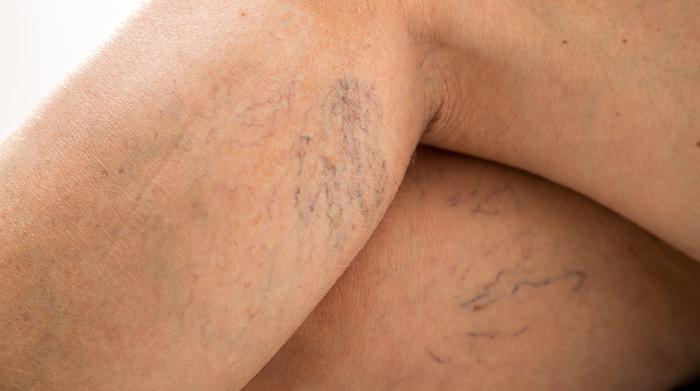Varicose veins are big, ugly veins that frequently occur in the legs. For many people, discolored veins are primarily a cosmetic concern. However, varicose veins can cause pain and discomfort in certain people. They may also be an indicator of a more serious vein problem that has yet to be identified.
For people who are tired of living with painful varicose veins or just want to remove them for cosmetic reasons, there are numerous treatment methods available. Although minimally invasive techniques can be performed in-office in a single visit and produce excellent results for the majority of patients, only surgery can completely eradicate troublesome veins.
Below are a few details about all available treatment methods for varicose veins.
1. Sclerotherapy
Sclerotherapy involves injecting a specific solution into the afflicted vein. The solution promotes scarring of the vein. The blood in the vein is forced to be diverted to a nearby healthy vein. The damaged vein gradually collapses and is reabsorbed by the body, resulting in its disappearance.
2. Endovenous laser treatment
Endovenous laser treatment (EVLT) is a popular treatment for big varicose veins. EVLT, also known as Endovenous laser ablation, is a cosmetic treatment for varicose veins. It can, however, be used to eradicate or lessen the uncomfortable symptoms of varicose veins, such as swelling, skin irritation, inflammation, or aches and pains.
3. Microphlebectomy treatment
Microphlebectomy, also known as ambulatory phlebectomy, is another successful minimally invasive treatment option for eliminating damaged varicose veins from the legs. The veins are extracted via the surface of the leg using small incisions. When sclerotherapy is ineffective, the treatment is widely performed to treat bigger varicose veins and can be an alternative choice.
4. Radiofrequency ablation (RFA)
During the procedure, a thin catheter is inserted into the affected vein and radiofrequency energy is applied to heat and seal the vein walls, causing the vein to collapse and seal shut. RFA provides fewer complications compared to surgical methods. It is performed under local anesthesia and typically takes less than an hour to complete.
You can resume your normal activities shortly after it, although strenuous exercise should be avoided for a short time. After treatment, most patients experience significant improvement in their symptoms, including pain, swelling, and the appearance of the veins.
5. Cyanoacrylate closure
During cyanoacrylate closure, a small amount of cyanoacrylate glue is injected into the affected vein using a special catheter to seal it. This vein treatment is usually performed on an outpatient basis under local anesthesia. You can resume your normal activities shortly after the procedure, but avoid extreme exercising.
It is one of the safest and most effective treatment options for varicose veins, with high rates of success and patient satisfaction. However, it may not be suitable for patients with certain medical conditions or complex vein anatomy.
6. VenaSeal closure
During VenaSeal closure, your doctor will inject a small amount of n-butyl-2-cyanoacrylate (NBCA) based adhesive into the affected vein using a special catheter to shut the affected vein. The procedure can be performed on an outpatient basis, without the need for general anesthesia. So, patients can resume normal activities shortly after it.
7. Laser-assisted foam sclerotherapy
Laser-assisted foam sclerotherapy is the combination of foam sclerotherapy with laser technology. During the procedure, a foam solution is injected into the affected vein, causing it to collapse and seal shut. Next, a laser fiber is inserted into the vein and delivers energy to further close the vein.
This therapy is usually performed on an outpatient basis and does not require general anesthesia. You may experience some discomfort and swelling after the procedure, but you will probably be able to resume normal activities within a day or two.
8. Vein stripping and ligation
Vein stripping and ligation is a surgical procedure used to treat severe varicose veins. During the procedure, the surgeon makes incisions in the skin near the affected vein and ties off the vein to prevent blood flow. Next, with a special tool inserted into the vein, they strip out the affected vein from the leg.
This procedure is usually performed under general anesthesia and may require an overnight hospital stay. You may experience some discomfort and swelling after the procedure, and it can take several weeks for the incisions to heal.
9. Endoscopic vein surgery
During endoscopic vein surgery for varicose veins a small incision is made in the skin near the affected vein, and an endoscope - a thin, flexible tube with a camera on the end - is inserted into the vein. The surgeon uses the camera to see inside the vein and with specialized tools removes it.
Endoscopic vein surgery is performed under general anesthesia and may necessitate a prolonged stay in the hospital. Patients may have discomfort and swelling after the treatment, and the incisions may take several weeks to heal.
Conclusion
There are nine available treatment methods for varicose veins. Though most patients prefer less invasive procedures, some cases require surgery. It is best for you to consult with your doctor before choosing any of these varicose veins treatment methods.






Comments